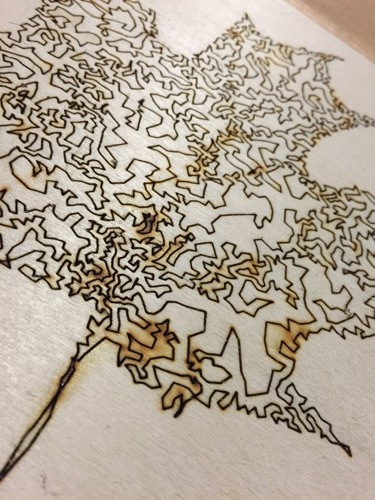@dwardio shared a really very cool stippling + TSP technique that I had never seen before, and links to software and a tutorial to generate it from a raster image. I immediately thought of a scoring technique the Glowforge supports, which is like a raster engrave, or a shallow cut in the wood. Since it’s so quick and clean, I had been playing with the idea of using it to score lines in wood, between which a colored stain could be carefully applied. (Like a grown up paint by numbers, to borrow a phrase from @dan)
Originally I was going to use it to score a picture frame with some sort of fancy pattern, but @dwardio’s post struck me as an awesome way to make an art piece on its own. I have been thinking about fall colors recently, because the last of the trees in Seattle are giving up their leaves, and so I looked for a Creative Commons picture of a maple leaf. This one by Evelyn Fitzgerald was gorgeous and had the vein detail I was looking for, so I downloaded it and loaded it up in the StippleGen2 program.
After some puttering with the settings, the original image created this svg:
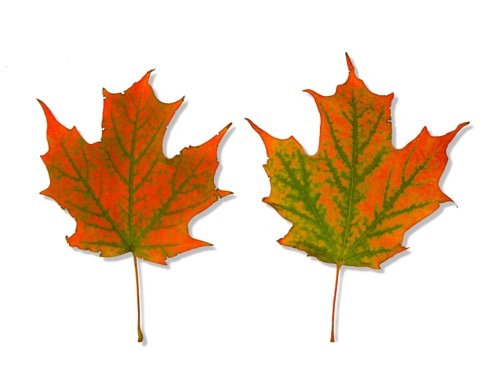

Cool! You can see the veins a little bit, yet I’m not really happy with the muddiness of the points at the bottom of the leaf and the big open areas. So, into Adobe Photoshop with the original image. Playing with contrast and brightness and deleting the drop shadow under the leaf helped, but the result still wasn’t great.
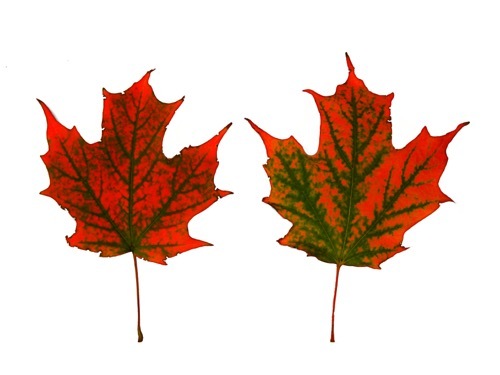

The points look better after removing the drop shadow, but I’ve lost almost all the vein detail. I’m not sure how StippleGen2 makes the image greyscale, so I’m taking some of the saturation out to try to really bump the contrast with the veins.
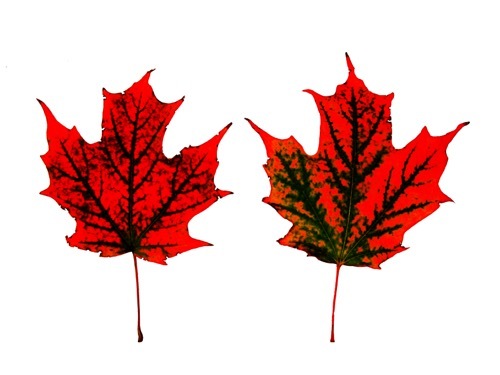

This isn’t quite right either. I’m realizing that I’ll never have a nice outline of the leaf because it’s so much lighter than the veins, so one final pass into Photoshop to darken up those edges with a brush tool.


Promising around the edges, but not quite enough detail, so I bump up the number of points, and voila:

In Illustrator I broke the path connecting the two leaves with the knife tool and it looks perfect. Now for lasering.
I made a quick test piece to try out a painting technique that I was hoping would allow me an easy way to add a splash of color to the lighter wood. I found that I need to use a different paint or technique, the watercolor paints still seeped in the edge of the wood under the masking paper.

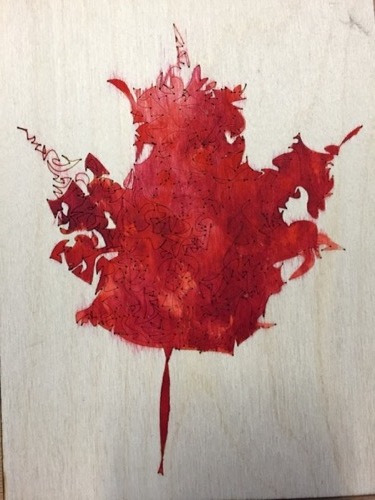
I also got feedback that people liked the plain cut better, so I left my final piece as a plain laser cut on light wood. The final piece came out great, but there was a little smoke damage where the masking paper peeled up on the thinner sections, so I sanded it down a little to clean that up. (The CNC’s compressed air hose was super useful for clearing the wood dust away):
